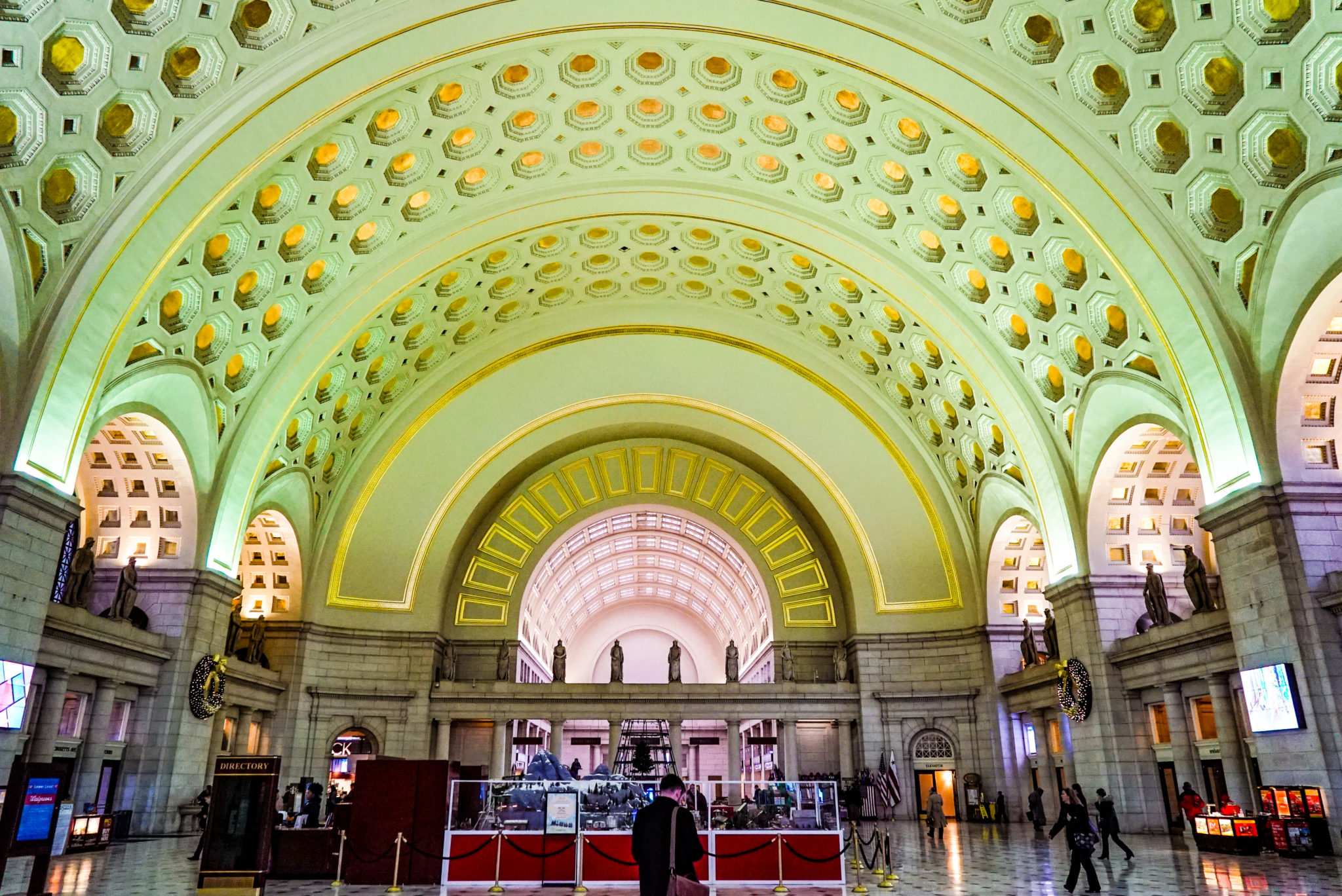WMATA claims that reduced hours are necessary to properly maintain the system, but most other cities’ rapid transit systems manage with longer operating hours and later closing times.
Along with fare hikes, bus service reductions, and reductions to Metrorail’s frequency, the new budget that the WMATA Board approved on March 23rd and that will go into effect on July 1st involves an overall reduction in Metrorail’s hours of operation.
Reductions in the hours that Metrorail is open have been justified to the public on two separate grounds: The need to save money when ridership and farebox revenue are falling, and the need to have more hours when the system is closed down available for maintenance.
Reducing service while raising fares is a dangerous choice for a transit system that is already rapidly losing ridership, but it may be unavoidable until additional funding sources can be found.
While WMATA’s current budget crisis will hopefully be temporary, its claim that shorter hours are necessary to keep the system in a good state of repair imply that the changes are expected to be permanent. In considering whether this is reasonable, it seems worthwhile to compare Metrorail’s hours of operation with those of the other comparable U.S. rapid transit systems.
Metrorail is open for fewer hours on weekdays than any other rapid transit system
Among the 12 rapid transit systems used in this comparison, D.C.’s Metrorail has the shortest weekday operating day of any American rapid transit system—17 hours and 20 minutes—and will be shortened even further—to 16 hours and 50 minutes—come July 1st.[1] Every other American rapid transit system is open at least 18 hours a day, and four (the subway and PATH in New York, the PATCO Speedline in Philadelphia, and two lines of the Chicago L) are open 24 hours a day, seven days a week.
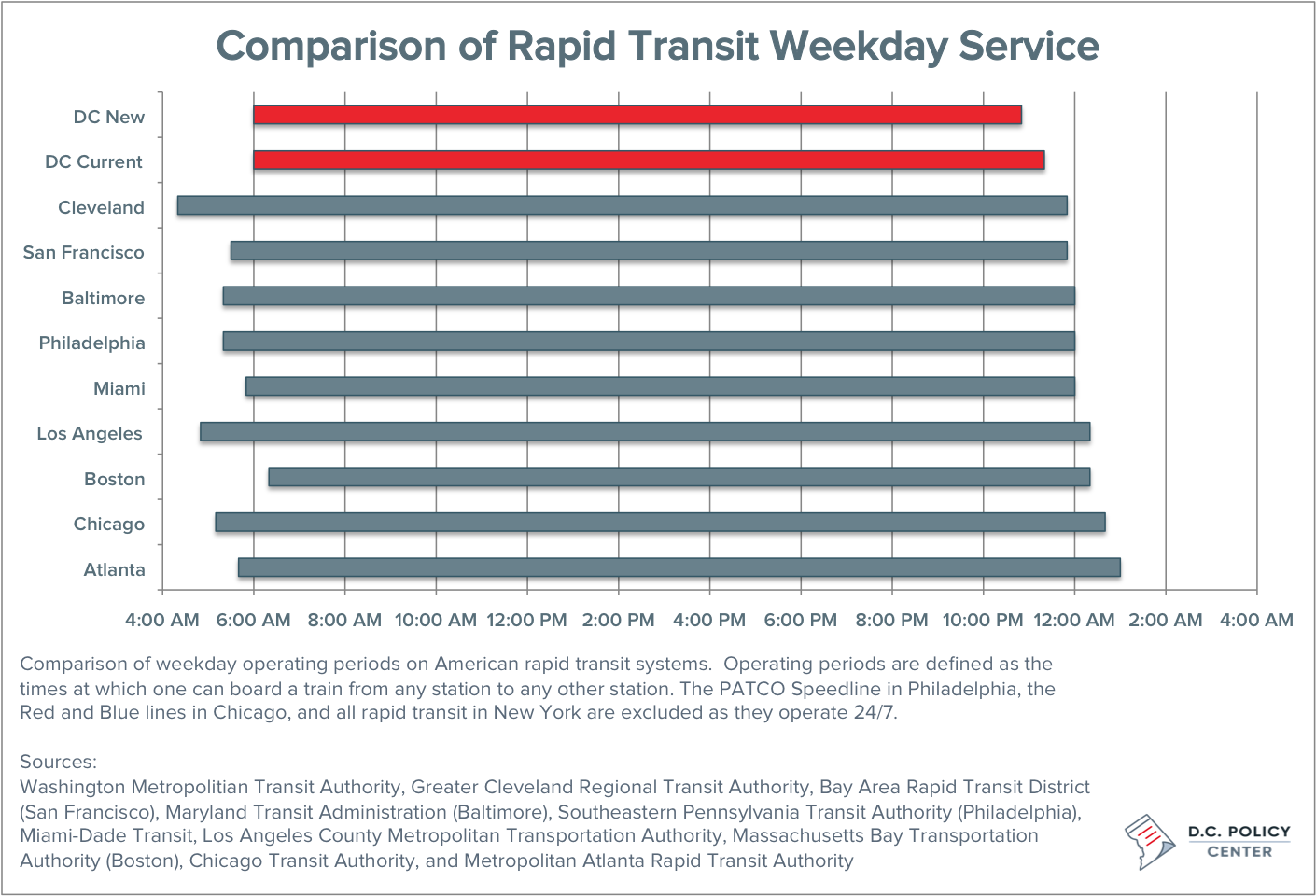
Metrorail’s current and new schedules both have the system opening at 6:00 a.m. on weekdays. Only one system—the Boston T, at 6:20 a.m.—opens later, but most systems open between 5:00 a.m. and 6:00 a.m.
The major reason that Metro’s weekday operating hours are shorter than any other system’s is that Metro closes so early. Metro currently closes at 11:20 p.m. on weekdays and, on July 1st, will begin closing at 10:50 p.m., an hour earlier than any other system.
Metrorail will stay open later on Fridays and Saturdays
When Metrorail eliminated “late-night service,” its service after midnight (11:20 p.m. using my standard) on Friday and Saturday evenings, as part of the SafeTrack maintenance program, the change was marketed as temporary and necessary to allow more time for track work.
The new Metro budget will partially reinstate late-night service, with the system closing at 12:20 a.m. Friday and Saturday evenings, an hour earlier than it did before SafeTrack. This change will come at a cost to Sunday service, though: the system will not open until 9:00 a.m.—an hour later than currently—on Sundays, and will close an hour earlier than at present, at 10:20 p.m.
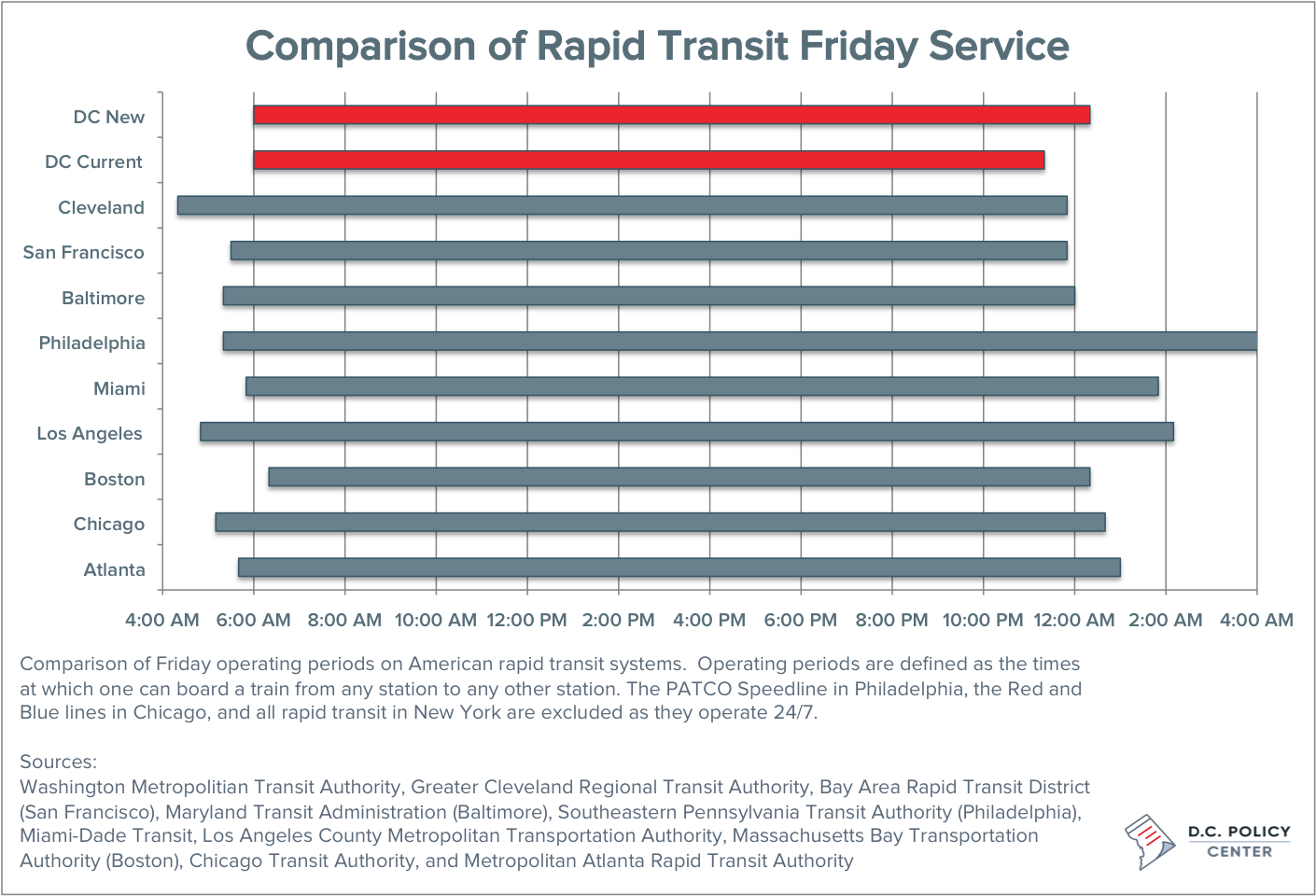
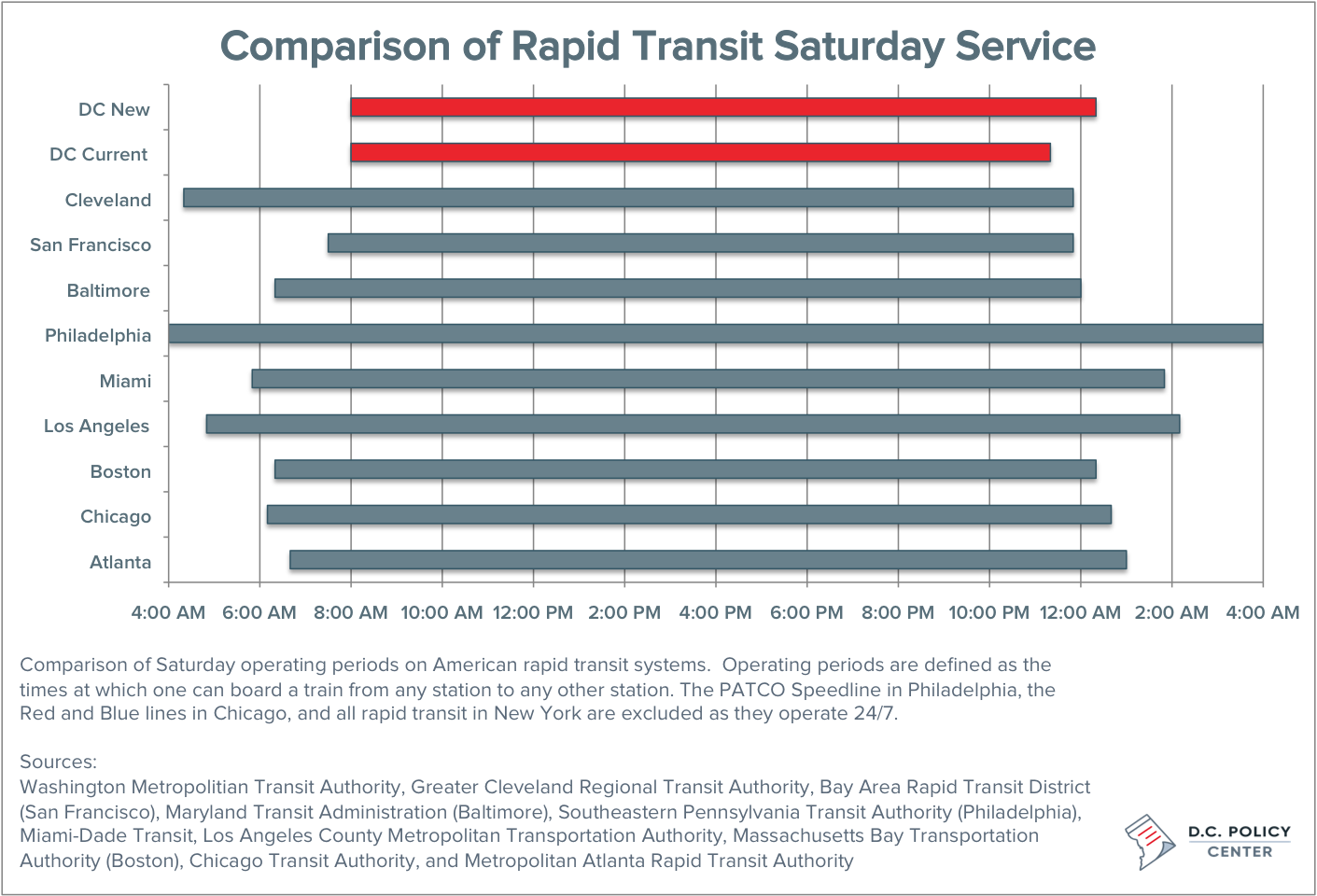
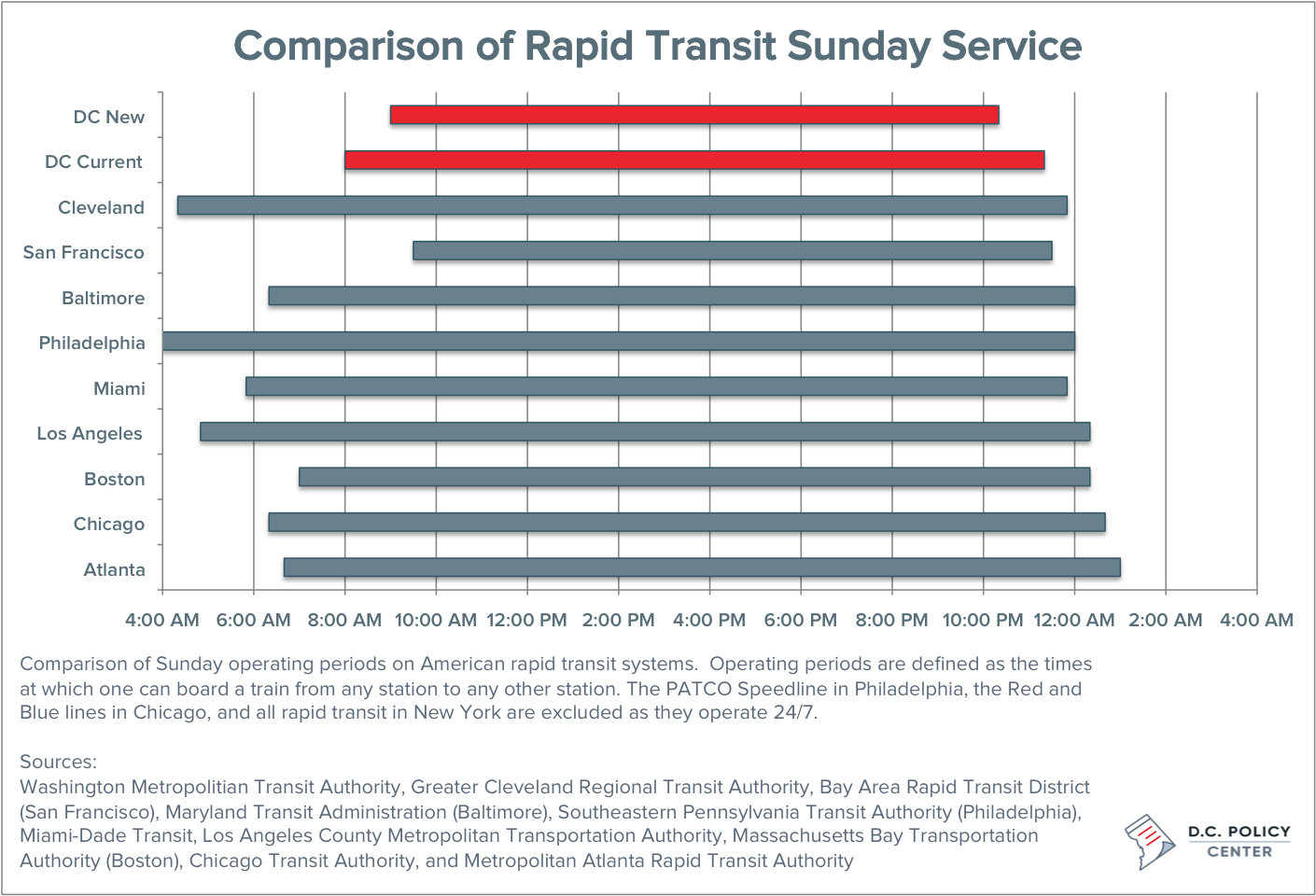
Most U.S. rapid transit systems do not remain open later on weekends: At present, only Miami and Los Angeles (both open two hours later on Fridays and Saturdays) and Philadelphia (open continuously from 5:20 a.m. Fridays until midnight on Sunday evenings) do. Boston did have late-night hours on Fridays and Saturdays, but they were abandoned in a recent round of budget cuts.
The new Metro budget’s 12:20 a.m. closing times on Friday and Saturday nights will put it in the middle of the pack in terms of closing times on those evenings. However, the 10:20 p.m. closing time on Sundays will be 90 minutes earlier than any other system closes.
Several rapid transit systems open later on weekends, but Metrorail’s current 8:00 a.m. weekend opening is at least an hour later than any other system’s weekend openings, except San Francisco’s BART, which opens at 8:30 a.m. on Saturdays and 9:30 a.m. on Sundays.
Concerns about operating hours
The fact that Metrorail is open fewer hours a week than any other rapid transit system—and will be open for even fewer hours after the new budget goes into effect—brings into doubt the claim that it is impossible to properly maintain Metrorail with longer hours of operation. This is particularly true given that a number of the systems Metrorail is being compared to are significantly older. And, although Metrorail does not have express tracks, none of the other systems discussed (except for the New York City subway and one line each in Philadelphia and Chicago) have express tracks.
Metrorail’s short hours of service and particularly early closing times likely impact ridership. Besides the obvious fact that people cannot ride the system when it is closed, evening riders who expect to be home before the system closes may still be discouraged from riding if they are concerned that a delay in their plans could push their trip home past closing time.
These service cuts seem likely to particularly affect poorer and more transit-dependent residents, who are more likely to need to make evening trips on weekdays and Sundays, especially if they work in food service, retail, or other fields that don’t have nine-to-five workdays.
Finally, the structure of the Metrobus network and suburban bus networks in the D.C. area make an early closing to Metrorail particularly problematic. When Metrorail opened, a number of bus lines were cut back to serve as Metrorail feeders, and no longer connect to downtown or the rest of the area’s bus network. This means that although major bus routes will remain open later than Metrorail, they may be useless for many riders who need both rail and bus segments to complete their trips.
